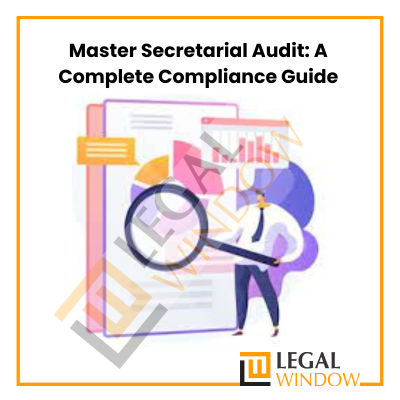Practical steps to change the Name of a Private Company
- January 31, 2023
- Change in Business

Recently my friend wanted to change the name of his company voluntarily. We didn’t know that such a thing is possible until I laid my eyes on this blog. The name of the company is considered the identity of the company (public or private), which can be changed with the consent of the members at the general meeting. Section 21 of the Companies Act, 1956 requires a special resolution to be passed at a general meeting along with the approval of the Central Government (powers have been delegated to the Registrar of Companies). So let us discuss how to change the name of a Private Company.
Change of name of Private Company
The name adopted by the limited liability company at incorporation may be changed later. A change in the name of a limited company requires the approval of the shareholders through a special resolution and the approval of the MCA. Changing the name of a limited liability company does not affect its legal entity or its existence as a legal entity. Changing the name of the company does not create a new company or a new entity. Therefore, changing the name of the company must not:
- They affect any rights or obligations of the company
- To invalidate any legal proceedings by or against the Company
- Not affect any legal proceedings by or against the company and pending under the old name; they may continue under the old name.
Reasons for changing the company name
A company may decide to change its name for a variety of reasons. Some reasons are listed below:
- Voluntary name change: The company’s board of directors can decide to change the company’s name voluntarily. Voluntary change of company name is legal provided all conditions are met.
- Change in business activity: The company’s board of directors can decide to change the name when changing its business activity. It may change the name to reflect new or additional business objects. In such circumstances, the company should also amend its memorandum of association to change its main object.
- For marketing or rebranding: A company may change its name for marketing reasons or to effectively position the company brand. It can also change the name according to the latest fashion trends for better brand positioning. When a company is ready to move into a new market, it can change its name and reposition its brand.
- Change of ownership: Usually, when a company’s ownership changes or a company takes over an entity, it is seen that the company’s name also changes to reflect the authority of the new management and for branding purposes.
- Avoid IPR issues: A company may change its name to strengthen its trademark or copyright in its name. Similarly, a company may change its name to avoid a potential conflict of intellectual property rights.
- Compliance with RoC direction: The RoC can make an order directing a change in the name of a company following a complaint filed by another company seeking priority use of the name or trademark. In this case, the company will have to change its name.
- Capitalize on the popularity of a service or product: When a business gains popularity for one particular product or service, it may decide to rename its company after that service or product to capitalize on that popularity.
Documents required for the company name change
The following documents are required in addition to the documents which are submitted with MGT-14 and INC-24.
- Certificate of Incorporation
- Changed MOA and AOA
- List of shareholders and directors
- Digital signature of the authorized director
- Proof of the company’s registered address
The process to change the name of a Private Company
To change the name of a Private Company, have a look at the steps given below-
Step 1: Board Resolution
A meeting of the Board of Directors must be convened to decide on the change in the name of the company and authorize the Director or Company Secretary to apply to the MCA to ascertain the availability of the proposed name. At the same meeting of the board of directors, a resolution on convening an extraordinary general meeting to change the name of the company and to change the articles of association and articles of association may also be adopted.
Step 2: Check Name Availability
In this step, you are required to check the availability of the name with MCA and trademark for changing the name of a private limited company. When the resolution is passed, we need to check if the proposed name is available or not. The procedure for applying for a name is similar to the procedure for applying for a name used when forming a limited liability company. You have to submit E-Form No. 1 along with a signed fee of Rs. 1000. The proposed name should conform to the name guidelines mentioned in Rule-8 of the Companies Rules, 2014 it should not be identical to any existing company name and should not contain any offensive word and should not conflict with the trademark of other companies.
Therefore, before choosing a name, please read the guidelines of the Companies Act, 2013. Approval of the name will be granted by the Registrar of Companies.
Step 3: Approval of the New Proposed Name by the Registrar of the Company
After the name registrar approves the company name, it will issue a name availability letter to the approval of the company name availability. The name will be valid for 60 days from the date of approval of the new name request.
Step 4: Submit a Special Resolution to change the Company Name
After the name has been approved by the commercial register, the company must convene an extraordinary general meeting and adopt a special resolution on changing the company’s name and the resulting changes to the articles of association and articles of association. The board of directors is required to issue a notice to all shareholders, directors, and auditors of the company concerning Section 101 of the Companies Act 2013. The board of directors shall state the date, time, and place of the extraordinary general meeting of the company. The notice should be given at least 21 days before the meeting. If 95% of the shareholders agree, the extraordinary general meeting can be held in a shorter period.
Step 5: Submit a Special Resolution to change the Company Name
Resolutions that must be passed at the meeting are-
- Remove any other object in the MOA object clause
- Company Name Change and Company MOA and AOA Change.
- The reason for liability in the social contract must be adjusted.
- If the name has changed due to a change in the business activity or the subject of the company, the main subject in the MOA must be changed.
- New MOAs and AOAs are to be adopted which are in line with the Companies Act 2013.
Step 6: Application for Approval of a Change of Company Name
After the adoption of a special resolution to change the business name, the special resolution and application for approval of the change of business name must be completed with the Registrar of Companies. An application for a change of company name must be made in Form-1B along with the application fee.
Step 7: Issuing a New Company Certificate
If the registrar of companies is satisfied with the request to change the name of the company, the registrar will issue a new extract from the commercial register. It is important to note that the change of company name is said to be complete and effective on the date of issuance of the new entry in the commercial register.
Step 8: Make MOA and AOA changes
When a new certificated company registration is issued, the company should make changes to the Articles of Association and MOA to incorporate the new company name.
Points to consider after changing the Company Name
- Paint or affix the company name on the outside of each office or place of business in legible characters.
- The new name shall be printed on all its business letters, billheads, and stationery and in all its notices and other official publications.
- If the company has changed its name within the last two years, it shall, as appropriate, paint or affix, or print together with its name the former name the last two years.
- Inform the bank where the company’s current account is kept and change the name of the company in the bank records.
- Apply for a new PAN and TAN of the company.
Company name change timeline
The time required to change the company name is approximately 10 to 15 working days as it involves approval from several departments.
Compliance after the company name change
The company must indicate a new name in the following documents:
- Common Seal and Official Seal of the Company
- Bills of exchange and promissory notes
- Company bank account name
- Revenue authorities, EPF, and ESI departments
- Company websites and social media accounts
- Company PAN and TAN
- Corporate letterheads, business cards, etc.
- Statutory registers of the company
- Employment and commercial contracts
- Update business licenses or permits.
Final words
Changing the name of the company represents a significant change, as it is necessary to change the articles of association and articles of association. A company can change its name by passing a special resolution in a general meeting and obtaining the approval of the Register of Companies (RoC) and the Central Government as given under the Companies Act, 2013.
CS Urvashi Jain is an associate member of the Institute of Company Secretaries of India. Her expertise, inter-alia, is in regulatory approvals, licenses, registrations for any organization set up in India. She posse’s good exposure to compliance management system, legal due diligence, drafting and vetting of various legal agreements. She has good command in drafting manuals, blogs, guides, interpretations and providing opinions on the different core areas of companies act, intellectual properties and taxation.
Categories
- Agreement Drafting (23)
- Annual Compliance (11)
- Change in Business (36)
- Company Law (148)
- Compliance (90)
- Digital Banking (3)
- Drug License (3)
- FEMA (17)
- Finance Company (42)
- Foreign Taxation (6)
- FSSAI License/Registration (14)
- GST (119)
- Hallmark Registration (1)
- Income Tax (201)
- Latest News (34)
- Miscellaneous (164)
- NBFC Registration (8)
- NGO (14)
- SEBI Registration (6)
- Section 8 Company (7)
- Start and manage a business (21)
- Startup/ Registration (130)
- Trademark Registration/IPR (40)
Recent Posts
About us
LegalWindow.in is a professional technology driven platform of multidisciplined experts like CA/CS/Lawyers spanning with an aim to provide concrete solution to individuals, start-ups and other business organisation by maximising their growth at an affordable cost.








